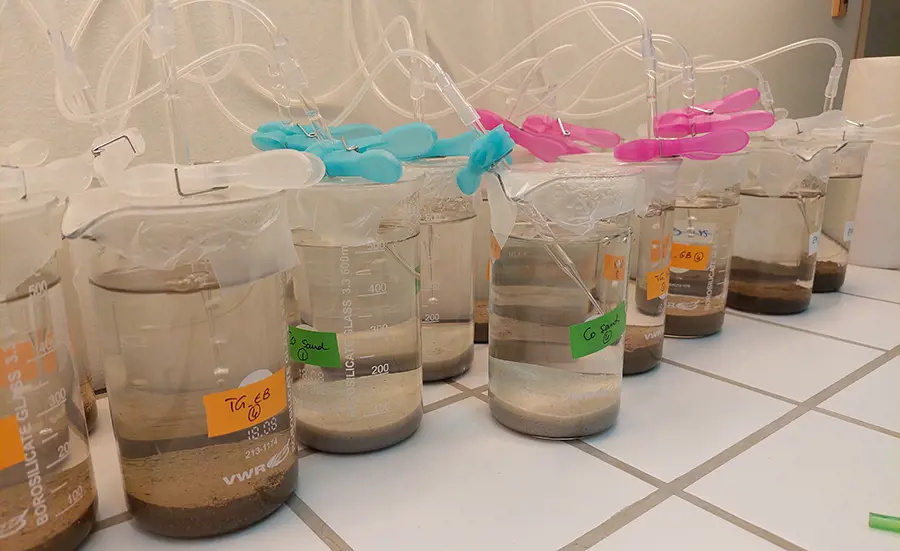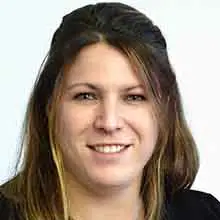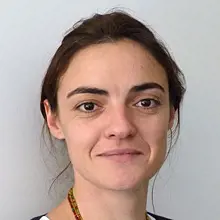
Use of bioassays to assess sediment quality. Preparatory study for phase 2 of the sediment module.
Sediments are an ecologically important compartment of surface waters and are therefore considered in the Swiss Water Protection Ordinance. Although there is no national monitoring programme on sediment quality, more than half of the cantons carry out or have carried out sediment quality assessment campaigns on a more or less regular basis (more information). The available data show that there are cases in Switzerland where sediment pollution is of concern and endangers the health of aquatic ecosystems (e.g. Beauvais et al., 2020; Casado-Martinez et al., 2019). Since 2015, the Ecotox Centre has been working in collaboration with the Federal Office for the Environment (FOEN) and the VSA (Association of Swiss Wastewater and Water Pollution Control Experts) on a concept for assessing sediment quality for Switzerland, known as the sediment module.
The aim of phase 1 was to propose a concept for monitoring and assessing the ecotoxicological quality of sediments in Switzerland, based on their chemical status (more information). This concept includes a harmonised protocol for sampling sediments and their pre-treatment for chemical analysis, sediment quality criteria (SQC) for a list of priority substances, and a system for classification into quality classes similar to the system in other modules of the Modular Stepwise Procedure. The concept should facilitate the selection and prioritisation of sites and substances as well as the assessment of trends in sediment contamination over time. If a more detailed risk assessment is required, the concept serves as a starting point to trigger further investigations. A multi-stage assessment framework is proposed, where a risk assessment is refined using bioavailability studies, bioassays or in situ studies of benthic communities.
In a first part, this project focuses on sediment contact tests, which test total sediments as they are closest to on-site conditions. In a pilot project - in parallel with the project on aquatic bioassays - (i) a battery of sediment bioassays will be tested with a wide range of sediments originating from sites comprising the most common sources of contamination in Switzerland (agriculture, industry, urban areas), (ii) the quality of the sediments will be assessed according to the sediment module rating system, and (iii) the applicability and sensitivity of the different bioassays will be investigated.
Bioassays used
The diversity of organisms living on or in sediments is large. Therefore, no single test can optimally cover the different sensitivities, exposure pathways and habitats. A battery of biological tests covering key taxonomic groups ecologically (feeding strategies, habitats) and taxonomically (genetic-based sensitivity) is recommended. The battery should also cover several ecosystem-relevant parameters (i.e. survival, growth, reproduction) at critical life stages or ideally cover the entire life cycle.
This study used bioassays that the Ecotox Centre has already used to test sediment quality in different types of water bodies such as canals, lakes and small and large rivers. The bio-tests are all standardised and are used in different countries to assess sediment quality:
- Sediment contact test with the ostracod Heterocypris incongruens
- Chronic toxicity test with the insect Chironomus riparius
- Reproduction and growth test with the nematode Caenorhabditis elegans
See here for more details on the bioassays.
References
Beauvais, R., Vivien, R., Ferrari, B. J. D., & Casado-Martinez, M. C. (2020). État des sédiments de canaux artificiels. Aqua & Gas, 100(11), 73-81.
Casado-Martinez, M. C., Schneeweiss, A., Thiemann, C., Dubois, N., Pintado-Herrera, M., Lara-Martin, P. A., Werner, I. (2019). Écotoxicité des sédiments de ruisseaux. Les pesticides présents dans les sédiments ont des effets sur les organismes benthiques. Aqua & Gas, 99(12), 62-71.

